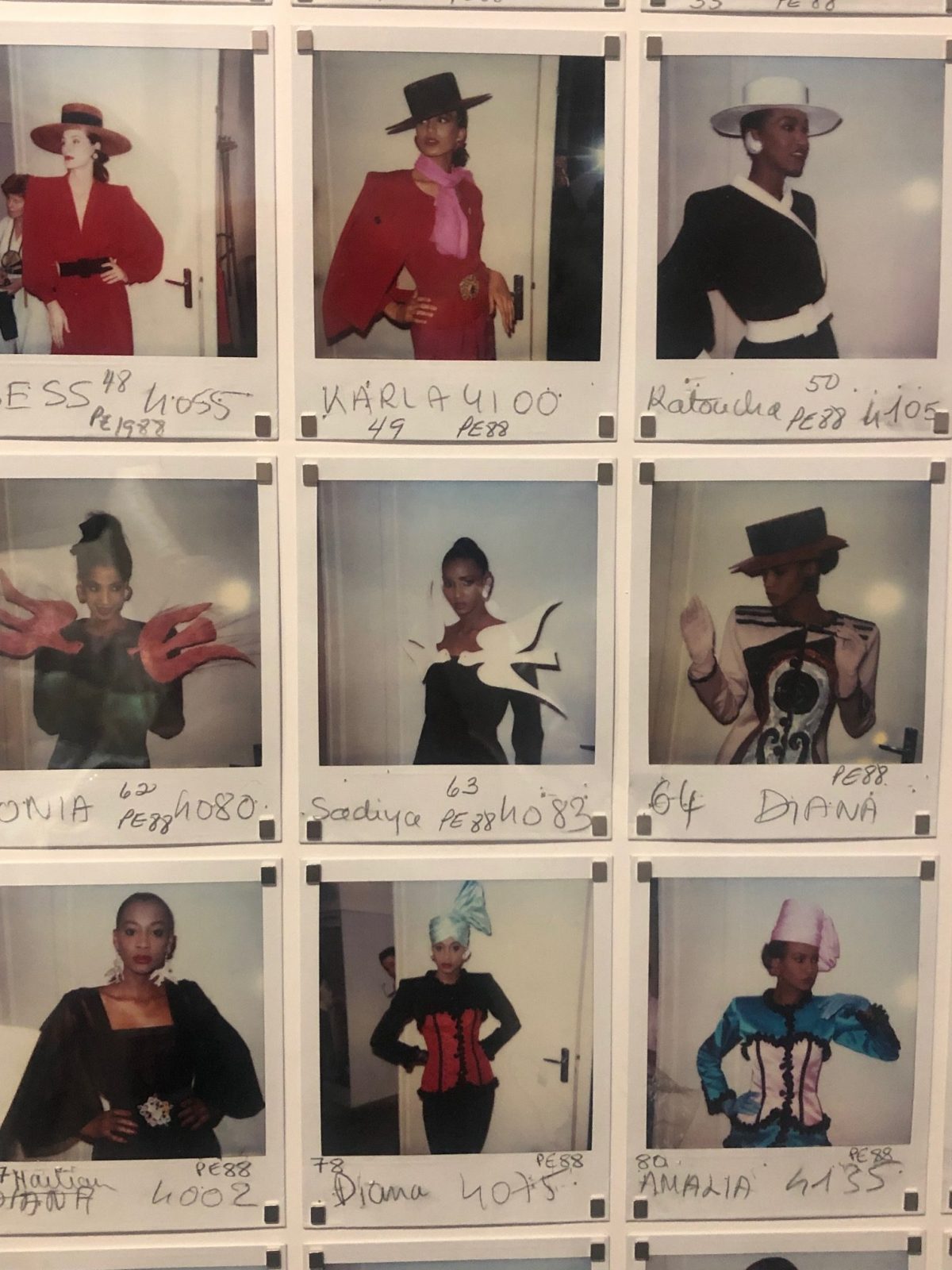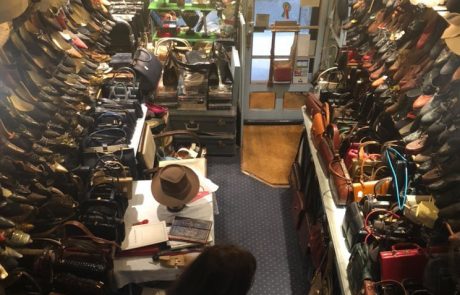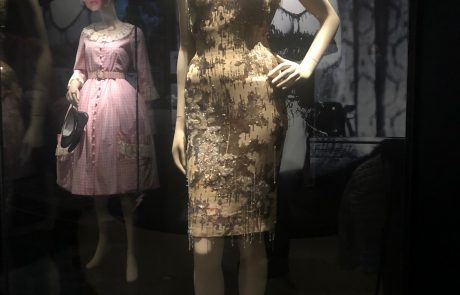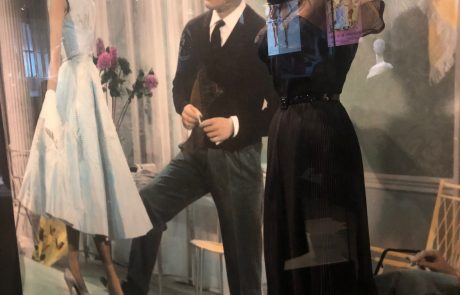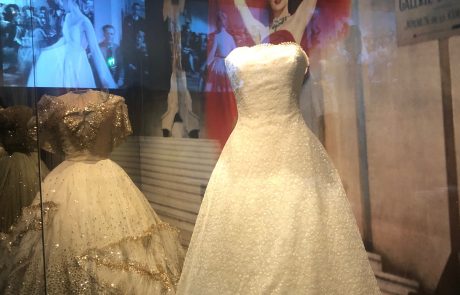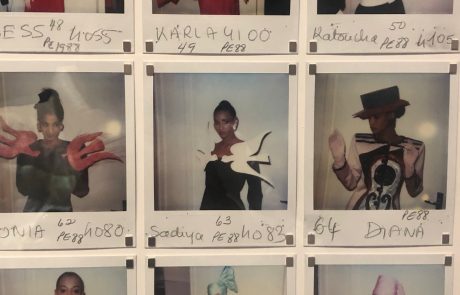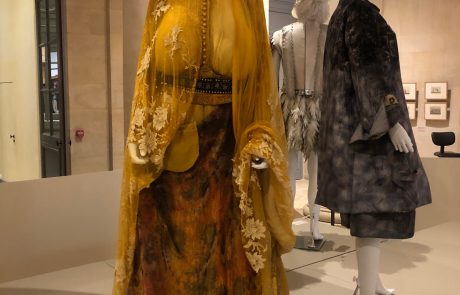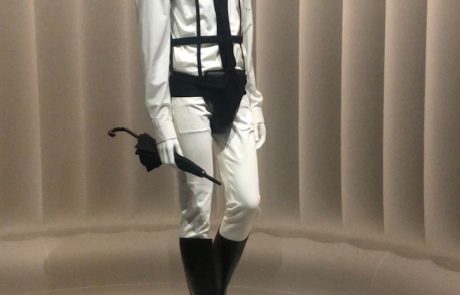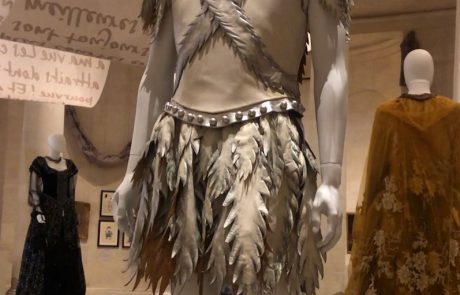As a part of our new #operajob Instagram series we offered our @creative.fellowship supporter, an American ballet dancer in Paris, India Rose the opportunity to try her hand at journalism and interview a former costume designer and current vintage shop owner Claudio Mancini. This interview was also produced in collaboration with the Paris guide and blogger @tatiana_paris who offered Claudio as an interviewee and supported us with some of the footage. Together they give us some fascinating insight about what exactly costume designers do, what the difference is between a costume designer and dresser, and how a costume designer can put their skills to use outside the industry.
How did you start making costumes?
I did classical literature studies with an art history and performing arts option and then I did graphic arts school in Paris. At the same time I’ve always been interested in costumes and clothes specifically for stage. As for the performing arts, I am self-taught in this. Let’s say, I learned through practice, since in fact I did not go to school particularly for this. I became interested by watching old films, by learning how people dressed, by looking at when the film was shot and how people were dressed at the time, etc. So, I trained my eye in that way.
How did you get involved into opera, theatre, and cinema?
At the age of 18 I had a friend who was directing theater and opera. She asked me to make costumes for a small opera that she was staging, it was Porgy and Bess by George Gershwin. Obviously, I didn’t have a lot of means so we did things with a little bit… of youth. This was the first experience with her, it was around 1980. After that I had other different experiences, including a film in the United States.
Did you travel to the US for your first film?
I went to the United States to make costumes for a film. It was a pure co-incidence. I got there by chance through a friend who worked in the cinema. He needed someone to do maybe, one job or just a single costume in Paris to see if it would work. I went to the appointment, the producer told me what he wanted. I made a single costume precisely for one actress. When he saw the costume, he asked me if I was free to do the whole film. And there I was: 21 years old and creating costumes for the whole film in Las Vegas.
What skills and knowledge do you need to have to be a costume designer?
To design costumes and then make them, you have to know how to draw, you have to be able to go from the drawing to the mockup and from the mockup to the costume, so there are three stages.
The first step is to imagine the visual and make a drawing, the second step is to make a model, in what we call a tailoring canvas, and once the canvas is done, we move on to the concrete realization with the real fabric and we do the fittings, and we finish the costume.
You need skills to be able to transit from the idea which takes shapes in your brain to the drawing on paper and then to the model to the costume.
Drawing is visualizing a character that will wear the costume in my head. Once this costume is approved, I go from this drawing to a concrete technical diagram to build the costume that is to say “the back is going to be cut like this, the sleeves are going to be like this, the skirt is going to be in such a way” and from that I create a model generally in an ordinary fabric canvas.
We have to check if this model matches the character, if it fits the actress or actor well etc. Once we made size adjustments, we need to produce the costume in real final fabric with the right dimensions and the accessories. We must decide if it’s going to be feathers or pearls or embroidery or embedded details, so we’re going to take all the final, definitive fabrics.
Is there a difference between making costumes for theater and cinema?
Yes. In theater it’s not the same as in cinema. You must never forget that a costume must be seen from afar in the theater.
In theater there are 30 or 40 meters between an actor and the audience. In cinema we can have a “close up” on the wrist, on the sleeve, or on the leg and it will be seen so closely that it has to be done as if our eyes are currently there, concretely in front of the object, 10 cm away. So you have to treat the details a lot more carefully in the cinema. And in the theater it has to be seen from afar so you have to envisage, you have to understand that from afar let’s say an embroidery for example has to be very contrasting with the fabric.
In theater we are going to play 20, 30, 40, 50 maybe 100 performances. We have to make at least two or three identical costumes, so that wardrobe people have time to rotate them. You have to wash costumes; you have to clean them and that takes 3-4 days. So, you need to use identical costumes. That’s called “doubling” or “tripling”. Usually doubles and triples are produced at least for the main roles.
In cinema it’s different. You can have a costume that is used in all scenes of the film or a costume that is used in a single scene. For a single scene generally we create a costume once. Sometimes if the scene requires a very particular staging, for example, if an actor has to fall on the ground and get dirty or soaked under the rain and the director wants more than one take, then costume people must produce 3, 4,5, 6, 10 identical costumes. If you want to redo the scene, you have to start with the dry and clean garment. So, we are not going to wait until next day for the costume to dry. We are going to have another one in stock so the actor could change into a new dry costume and start the scene over again. If you have to do the scene three or four times, you have three or fours costumes ready. All costumes must also be absolutely identical, otherwise the difference will be seen on the screen. And if the scene requires the garment to be dirty or damaged… Yes, we don’t think of it!
What is the lifetime of costumes in theater and cinema?
Film costumes are timeless. Even if you haven’t seen the film, you probably saw the costume in a small clip of 20 seconds. Like when Marylin Monroe sang “Happy Birthday Mr President” to Kennedy, she had this amazing sequin dress – everyone saw it! No one attended John Kennedy’s birthday party but everyone saw the dress.
With theater, only people who live in the city or visit it at the time the play is running can see the costumes. A play is ephemereal, it’s going to be performed 50 times, 100 times. The production may be redone in 10 years or never. But there would be tens of thousands of people who see a film premiered and millions who watch it later.
Does costume designer also dress actors?
Costume designer and a dresser are two different professions. A dresser backstage in a theater or on a movie set is the person who is there like a nurse. Costume designer is the doctor who made the medical prescription, he is no longer there, he has done his job. It’s the nurse who must apply the doctor’s recommendations. The dresser, is there with the stack of identical dresses and it’s up to her to prepare them so that she is ready to work. This is the reason why we absolutely do not improvise on a set. When we say that on March 22 we are shooting such a scene, we have no right to change it because the dresser is on schedule for the costumes on March 22. She knows which character wears this dress or this costume and if we tell her “ah well today we are going to shoot something else” she says “Well, no, because I haven’t prepared the costumes for that day. I prepared the costumes to wear for this this character so if you want to shoot something else it’s not ready.” That’s why making movies is so expensive! Sometimes we don’t realize how huge the machine behind the scenes is.
How did you switch from designing costumes to owning a vintage shop?
I’ll make a very short summary of my life:I have always been passionate about clothes, precisely about old clothes as my interest comes mainly from the cinema. I watched a lot of old movies and I was passionate about the way actresses and actors were dressed on the screen. So I tried to make it my work to produce the same clothes. For various reasons I could not survive neither from cinema nor theater only. I decided also to sew dresses, to make clothes for men and women who needed outfits for events or weddings. People started coming to me saying “I’m going to get married I want a wedding dress, can you design?” and I did that many times.
While working on wedding dresses for my friends I gradually realized that my real passion was for antique clothes. I went a lot to flea markets and garage sales. Occassionaly I would find beautiful old clothes. When I saw the quality of the work that has been done on a period garment, my intention would actually be to buy them and restore. I really found that my heart was in restoring clothes that had already existted to give them a second life. That’s how from costume designer I progressively I switched to vintage. It’s been 25 years now that I manage this shop that sells period pieces from 1900s till 1960s.
What are the major differences between working as a costume designer and vintage shop owner?
The work of costume designers is a solitary work that we do at home. In fact, we read a play, or we read the synopsis of a film and there is a sort of brainstorming that takes place, and we imagine, we dream of the costumes. We tell ourselves that this play evokes this, that this film, this synopsis it conjures up this atmosphere and this is how I see the costumes. That is a real work of designers, it is me who decides if the dress it is purple, black, yellow, or green.
My work in the boutique is totally different. It’s another way of dressing people. People come to the boutique asking in a way, to travel into the past. They want to travel back in time and recreate the images they all saw in films. And it is up to me to look at the person in front of me, see what physique they have, and search amongst my collection what I possess to bring this image to life. Most of the time we manage to find things that compromise between what the customers have in mind and what I have at disposal. After all I don’t have clothes to dress everyone in all sizes. I offer to people a catalogue where there are several total looks, costume ideas, depending on what they want. They would point: “Oh yes I want to be dressed like this lady in the photo!” and we go upstairs to see what I have to dress people accordingly.
How does a day in your boutique look like?
In the morning I work in the workshop to prepare what I’m going to sell in the afternoon .So my typical day begins with research work and restoration. Then I go out to make supply purchases. In the afternoon I come to the shop, and welcome people, advise them, see what they are looking for, assess what they need, and offer them option, and possibly sell or rent to them depending on the search or request they have. My working day at the shop ends around 8 p.m. Then I go home and sometimes I start up again. I get back to continuing a restoration that I started in the morning. I do this almost every day of the week.
For what occasions people are dressing up?
In fact, they often dress up for events. Meaning a wedding, a birthday party, a party, a ball, a school dance – so the people come to my boutique saying “I would like to look my best for this big day in my life, show me what you have to dress me.” and so generally we do rentals because people leave with everything: the accessories, the dress, the hat, the gloves, the furs, the jewelry, the shoes, that’s the whole look. And so they leave dressed like it’s 1920, it’s 1930, it’s 1950 to 1960 and they go to their events, their parties, and then they bring all this back 3 days later.
Also, there’s always been something we call “collector wearers”. People who collect vintage, but also wear it. There are people who really only wear things from a certain time period. These got fixated in their minds on a certain time period. They decided that life had stopped in 1955, and so for all their life they are going to dress like we did in 1955. You can’t find these clothes in the normal trade circuit; you have to go to vintage shops like mine to find this stuff.
What advice would you give to an aspiring costume designer?
The best advice I could give is to never stop learning and developing. Be a master at the technical part, which you learn at school but also absorb endlessly: watch movies, look at paintings, go to exhibitions, look at the architecture of buildings, take in the shapes of trees in nature, wonder at the shape of a flower. One day all these details will inspire you for an embroidery pattern, a bag, a hat, or gloves. Everything is correlated and it is up to you as a designer to know how to interpret what you see. Inspiration comes from all over the world, from what you see in life. Travel! Take trains, boats, or a bike. A costume designer must be like a sponge. When you squeeze a sponge it gives back what it has absorbed.
Project collaborator: @tatiana_paris
@creative.fellowship supporter and interviewer: India Rose

